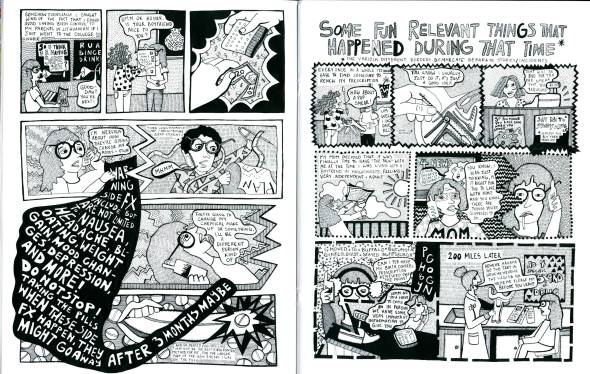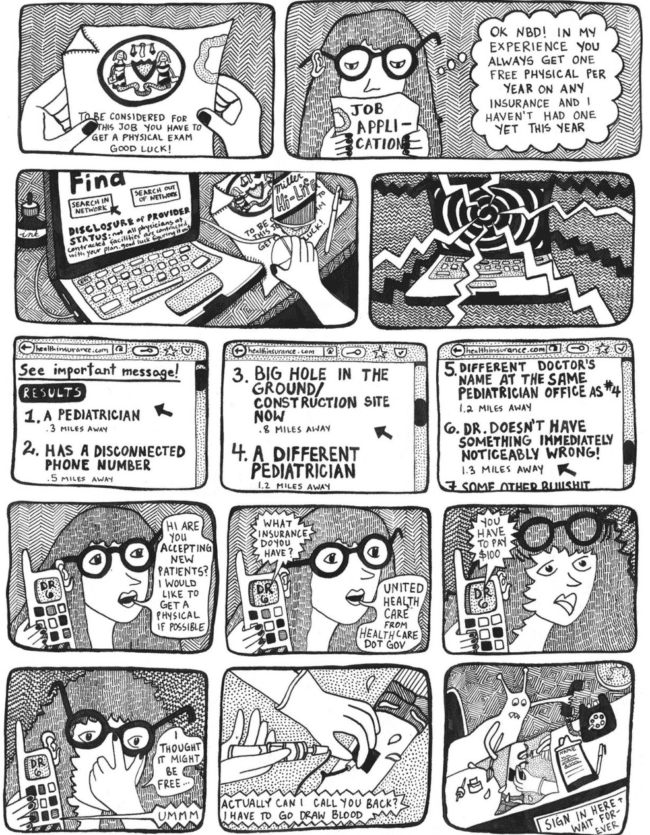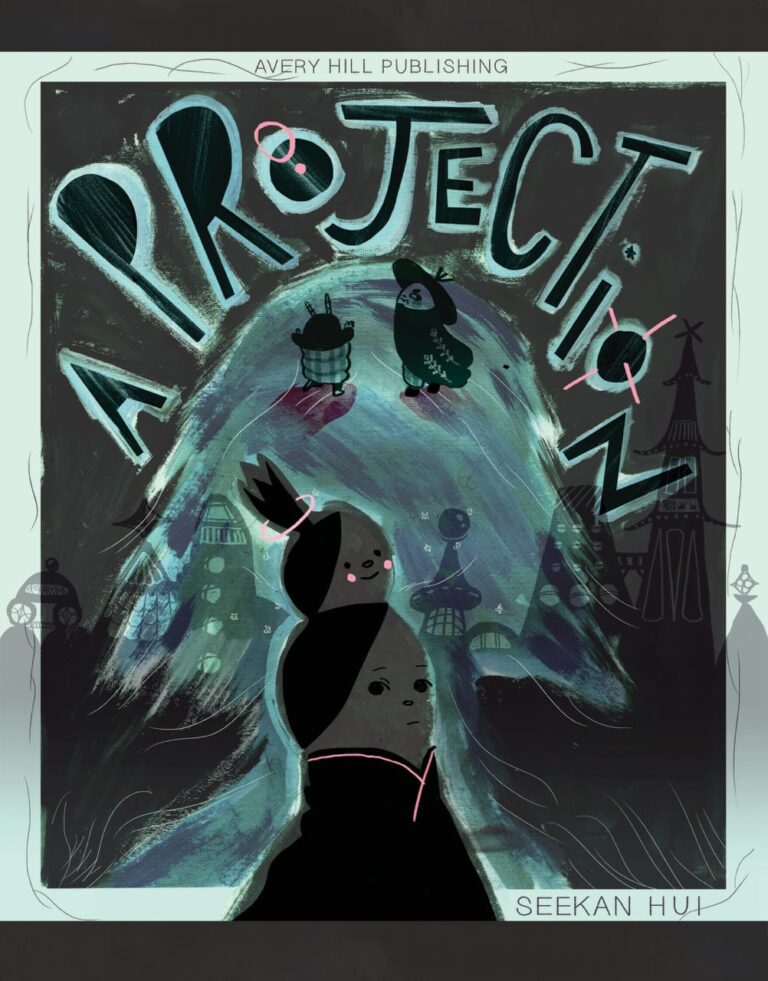There's something of a 1990s feel to these two full-size comics by Goda Trakumaite, found in its style, voice, and subject matter. She won the 2015 Cupcake Award to do these comics, a grant funded by the Chicago Alternative Comics Expo (CAKE). These comics are an extensive exploration of her own personal difficulties involving birth control, as well as the experiences of friends. There is a beautifully dense, lived-in quality to her line that's instantly appealing, as she quickly not only puts the reader at ease but makes them a confidante. On a given page, you might see thick cross-hatching, disciplined stippling, expertly spotted blacks that smoothly direct the reader's eye across the page, a clever use of white negative space and wobbly panel design that makes each page feel like a living, breathing organism. Trakumaite yanks the reader by the hand into her world, and the reader simply has to take in each page on her terms.
Trakumaite's tone is one of bemused exasperation, as she has to jump through hoop after hoop in order to get proper advice and the gynecological care that is covered by her insurance. There are some grimly funny sequences where medical professionals use their gravitas to upsell her on procedures without telling her that they are extra. Later, there's an especially delicious sequence where she refuses an STD test because she had already had one recently and she forced the provider to tell her how much it would cost. The first issue ends with her learning that getting an IUD wouldn't cost that much money.
Trakumaite is a multi-media artist, and she includes a DVD with the first issue that explains why she draws herself so much. It's a trippy, funny video, and her entire aesthetic reminds me a little of the sort of thing that Dunja Jankovic used to do more of, back when she was actively pursuing sequential art. She uses her drawings for a stop-motion effect, swirling them around at certain spots to indicate her desire to do abstract comics, or history comics, or something about feminism. Yet she somehow always winds up back at herself, something even her friends notice. There's a hilarious anecdote about her making a drawing for her father, him getting upset because he thought she made him look old, and them offering to pay for drawing lessons!

Even with stories with beginnings and endings, Trakumaite's work has an in media res quality to them, as we're thrown right into the middle of her swirling line and the chaos surrounding these issues, and it's the reader's job to pay attention and catch up. There aren't any good comparisons to make regarding her style, other than to say that she's in the same continuum of Julie Doucet. Both artists crowd the page, making it uncomfortable for the reader and making them read it on the artist's terms. Both are casual and unapologetic about sharing incredibly intimate details with the reader, and those details are frequently bound up in confusion and frustration. Their character designs are distinctive, expressive and even funny to look at. In Trakumaite's case, her choosing to frequently alter line weights is a big key to the success of her work. It allows her to bend reality, making it solid in one panel and wobbly in the next. When she exaggerates facial features (like giving her gyn provider jagged, monstrous teeth), it fits right into the continuum of the rest of her character designs.
The second issue starts with the positive of finally getting an IUD and it working smoothly. That is, until she gets hit by a car on her bicycle and she starts feeling pelvic pain. Trakumaite really hits on a key issue regarding women's health, which is that many doctors either don't know about, don't care about, or don't choose to even believe in certain conditions. Moreover, they often neglect to follow up in any real capacity with a patient (unless they can somehow charge them for it). People like Trakumaite are left with unanswered questions and doctors who refuse to further investigate pain when their first diagnosis doesn't pan out. What's interesting is that Trakumaite quickly learns what kind of game she has to play just to get basic health care, as she realizes that the medical industry in general is frequently out of touch when it comes to women's health.
The stories Trakumaite tells about her friends back this up. One woman who was experiencing severe pelvic pain went to the emergency room, where it's often the case that doctors on call don't do a great job of identifying problems that aren't immediately obvious, such as a heart attack or a gunshot wound. For one friend, they sent her home with "maybe it's a cyst" and a referral to a gynecologist--and nothing for her pain. It was eventually deemed that she had a Fallopian tube infection--even though she didn't have sex with men. Bizarre encounters with medical professionals were pretty much de rigueur in this story, but this one included a gynecologist kissing her friend on the forehead after she performed a pelvic exam. Of course, the strangest element of the story is that Trakumaite sent her friend her old menstrual cup after she got an IUD; she wondered if her friend didn't boil it thoroughly enough before using it, possibly causing the infection.
The final story details another friend's nightmare experience with her IUD, which doctor after doctor ignored until she finally got one to listen to her. That's followed by a brief history of the Dalkon shield, a horrific IUD that caused rampant infections and caused trauma when removed. It was pushed under fraudulent research and then unloaded on foreign nations when it was banned in the US. At their heart, these stories are about women negotiating medical authority and bureaucracy, which turns out to be a battle with a form of systemic misogyny that's not just virulent, but also frequently absurd. Trakumaite's stylistic choices meet that level of absurdity and twists it into her own vision of the world as a whirling, chaotic series of events and images. The anger and frustration she and her friends feel is met with humor and an exasperated sense of speaking truth to power, and then channeled into dense, layered visual language.









